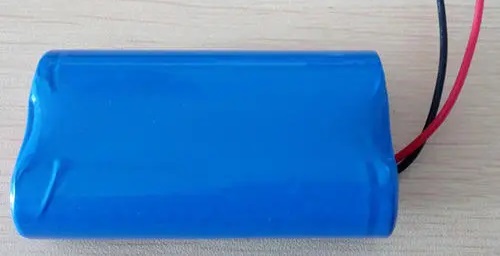Do you know the common charging methods of lithium ion battery pack?
Time:2022-04-27
Views:2194
With the development of global diversification, our life is also changing, including all kinds of electronic products we contact. Then you must not know some components of these products, such as lithium-ion battery pack. Lithium ion battery is an ideal power supply because of its high working voltage, small volume, light weight, no memory effect, no pollution, small self discharge and long cycle life. In practical use, in order to obtain higher discharge voltage, at least two single lithium-ion batteries are generally connected in series to form a lithium-ion battery pack. Here are some common charging methods of lithium ion battery pack:
1. Ordinary series charging

2. Battery management system and charger coordinate and cooperate with series charging
3. Parallel charging
4. Series high current charging plus small current parallel charging
1. Ordinary series charging
At present, the charging of lithium-ion battery pack generally adopts series charging, which is very important because the series charging method has the advantages of simple structure, low cost and easy realization. However, due to the differences in capacity, internal resistance, attenuation characteristics, self discharge and other performance between single lithium-ion batteries, when the lithium-ion battery pack is charged in series, the single lithium-ion battery with the smallest capacity in the battery pack will be fully charged first. At this time, other batteries are not fully charged. If the series charging continues, the fully charged single lithium-ion battery may be overcharged.
Overcharging of lithium-ion battery will seriously damage the performance of the battery, and may even cause explosion and personal injury. Therefore, in order to prevent overcharging of a single lithium-ion battery, the lithium-ion battery pack is usually equipped with a battery management system (BMS), and each single lithium-ion battery is protected by overcharging through the battery management system. When charging in series, if the voltage of a single lithium-ion battery reaches the overcharge protection voltage, the battery management system will cut off the whole series charging circuit and stop charging to prevent overcharging of a single battery, resulting in charging of other batteries. Lithium ion batteries cannot be fully charged.
After years of development, lithium iron phosphate power lithium battery has basically met the requirements of electric vehicles, especially pure electric vehicles, due to its high safety and good cycle performance. The process can basically be used for batch production conditions. However, the performance of lithium iron phosphate battery is different from other lithium-ion batteries, especially its voltage characteristics are different from lithium manganate battery and lithium cobalt oxide battery.

2. Battery management system and charger coordinate and cooperate with series charging
The principle of coordinated charging mode between the battery management system and the charger is that the battery management system monitors the current state of the battery (such as temperature, single battery voltage, battery working current, consistency and temperature rise, etc.). These parameters are used to estimate the maximum allowable charging current of the current battery; During charging, the battery management system and charger are connected through communication line to realize data sharing. The battery management system transmits the parameters such as total voltage, maximum single cell voltage, maximum temperature, temperature rise, maximum allowable charging voltage, maximum allowable single cell voltage and maximum allowable charging current to the charger in real time. The charger can change its own charging strategy and output current according to the information provided by the battery management system.
When the maximum allowable charging current provided by the battery management system is higher than the design current capacity of the charger, the charger will be charged according to the designed maximum output current; When the battery voltage and temperature exceed the limit value, the battery management system can detect in real time and notify the charging in time. When the charging current is greater than the maximum allowable charging current, the charger starts to follow the maximum allowable charging current, that is, effectively prevent the battery from overcharging and prolong the battery life. In case of failure during charging, the battery management system can set the maximum allowable charging current to 0, so as to force the charger to stop running, so as to prevent accidents and ensure the safety of charging.
3. Parallel charging
In order to solve the problem of overcharge and undercharge of some single batteries in the battery pack, a parallel charging method has been developed. However, the parallel charging method requires multiple low-voltage, high current charging power supplies to charge each single battery. There are defects such as high cost of charging power supply, low reliability, low charging efficiency and thick connecting wire diameter.
4. Series high current charging plus small current parallel charging
Because the above three charging methods have some problems, I have developed a charging method most suitable for high-voltage battery pack, especially electric vehicle battery pack, that is, the battery management system and charger should be used in series with high current for charging and continuous charging. Voltage limit current small current parallel charging mode.
I believe that by reading the above content, you have a preliminary understanding of lithium-ion battery pack. At the same time, I hope you can make a summary in the learning process, so as to continuously improve your design level.
|
Disclaimer: This article is transferred from other platforms and does not represent the views and positions of this site. If there is infringement or objection, please contact us to delete. thank you! |











